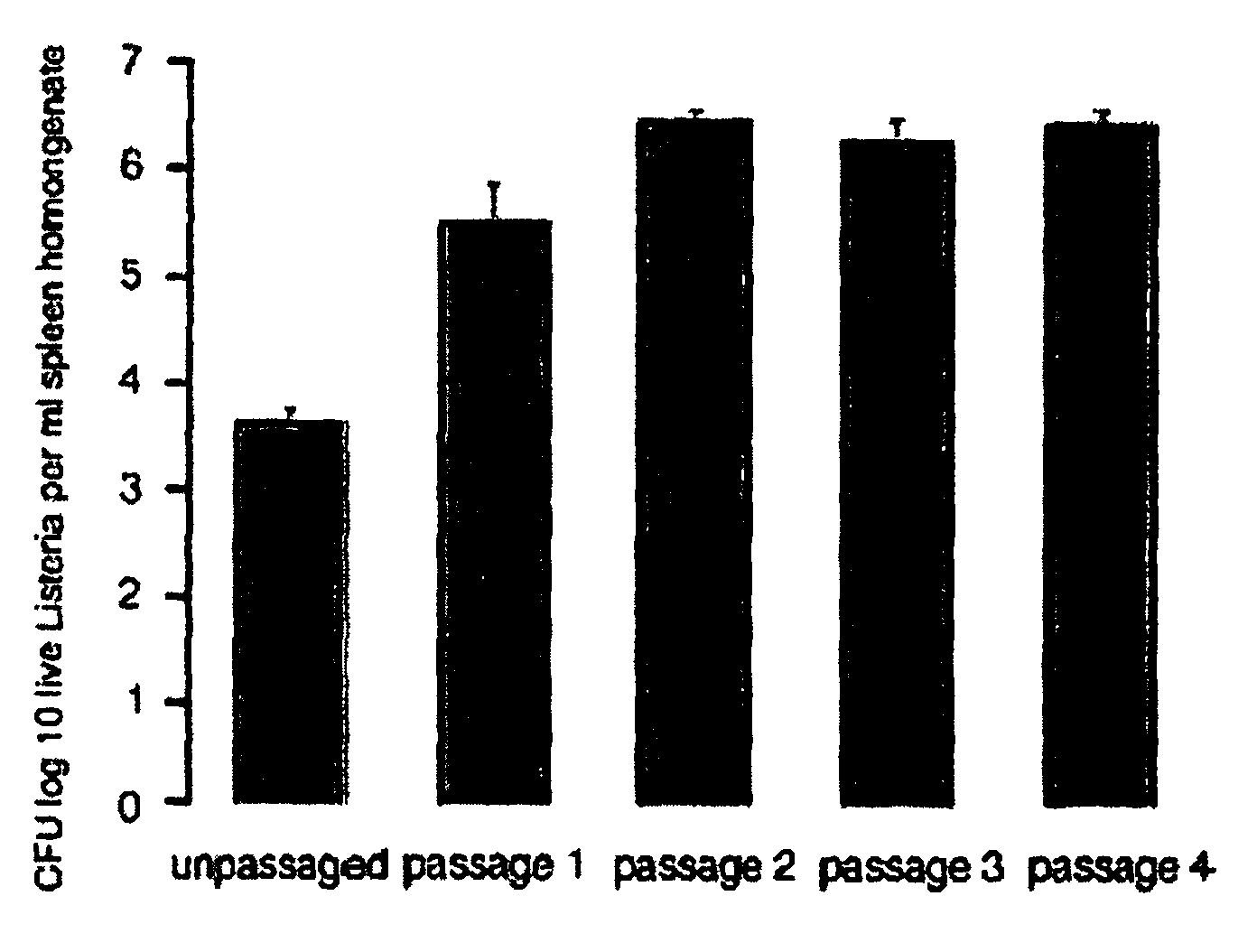Compositions, methods and kits for enhancing the immunogenicity of a bacterial vaccine vector
a technology of vaccine vector and immunogenicity, which is applied in the field of vaccine vector immunogenicity enhancement, can solve the problems of limited immunity, ineffective anti-intracellular organisms or tumors, and ineffective traditional vaccine strategies, and achieve the effect of enhancing the immunogenicity of a bacterial vaccine vector and enhancing the immunogenicity of a listeria vaccine vector
- Summary
- Abstract
- Description
- Claims
- Application Information
AI Technical Summary
Benefits of technology
Problems solved by technology
Method used
Image
Examples
example 1
Passaging of Listeria Vaccine Vectors Through Mice Elicits an Increased Immune Response to Both Heterologous and Endogenous Antigens
[0139]Listeria vaccine vectors have been shown to be useful for the induction of a protective immune response, especially an immune response to tumor antigens and intracellular pathogens such as viruses, intracellular bacteria, and parasites.
[0140]To create Listeria vaccine vectors, the skilled artisan must manipulate and grow Listeria in an in vitro environment. While such an environment facilitates cloning and other molecular biology techniques, there is no pressure on the Listeria vaccine vector to express virulence factors that may lead to an overly attenuated phenotype incapable of eliciting an immune response in the vaccinee. While an attenuated phenotype is desired, if a Listeria vaccine vector is unable to survive for any amount of time in the intracellular environment, there is no possibility of generating any cellular immunity to a heterologou...
PUM
| Property | Measurement | Unit |
|---|---|---|
| w/w | aaaaa | aaaaa |
| temperature | aaaaa | aaaaa |
| rectal temperature | aaaaa | aaaaa |
Abstract
Description
Claims
Application Information
 Login to View More
Login to View More - R&D
- Intellectual Property
- Life Sciences
- Materials
- Tech Scout
- Unparalleled Data Quality
- Higher Quality Content
- 60% Fewer Hallucinations
Browse by: Latest US Patents, China's latest patents, Technical Efficacy Thesaurus, Application Domain, Technology Topic, Popular Technical Reports.
© 2025 PatSnap. All rights reserved.Legal|Privacy policy|Modern Slavery Act Transparency Statement|Sitemap|About US| Contact US: help@patsnap.com



